We’ve reach the midway point of 2013, and here are the returns of the major asset classes as benchmarked by passive mutual funds and ETFs. Return data was taken after market close at the end of June 2013. I’m still tweaking the format, in the hopes of making it easier to understand. Below is a chart of the all the trailing total returns for year-to-date, trailing 1-year, and trailing 10-year periods.
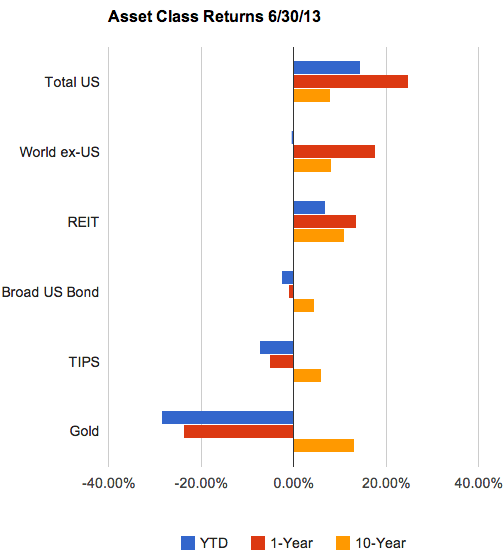
Market Commentary
The big news recently is the Fed talking about possibly tapering off its quantitative easing. Since that drove interest rates up, bond prices fell. I think this was a good reminder that we are in abnormal times, with the super-low interest rates being artificially depressed and that one day we will revert back to the mean. Even though my bond holdings fell as well, I’m fine with that if that’s a result of a healthy stock market and it means higher interest rate payouts in the future.
Stocks prices have pulled back a bit recently, but are still well above levels from a year ago. If you bought and held since 2009, you’re still happy. Gold has dropped nearly 30% since the beginning of the year. I just don’t understand gold prices, which is why I don’t own it. I can see a place for it as a diversifier, but it just seems too volatile and speculative to be considered “real money”.
The details:

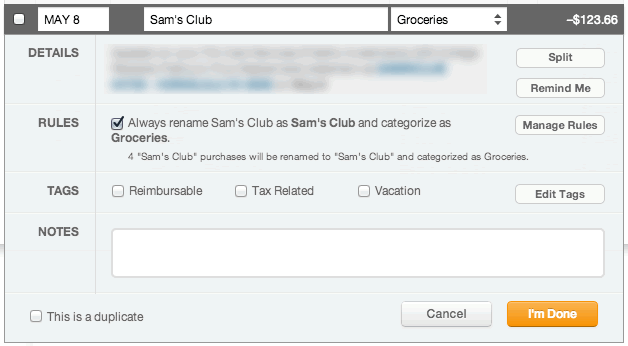
 I’ve been thinking about another excerpt from investor
I’ve been thinking about another excerpt from investor 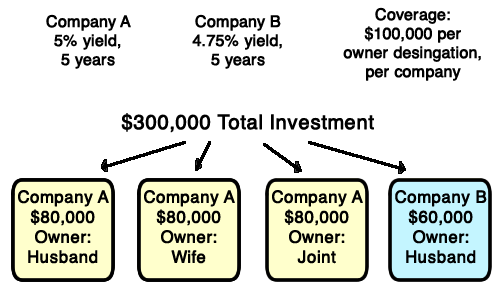
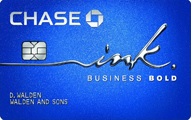 The Ink Bold® Business Charge Card is a premium small business being offered by Chase, directly competing with the biz cards from American Express. If you have a small business including freelance or online eBay/Etsy sales, using a business card allows you to separate your personal and business expenses as well as get some nice rewards in the process. Just to get you to try it out, Chase is offering 500 bucks in the form of 50,000 bonus Ultimate Rewards points after spending $5,000 in the first 3 months your account is open.
The Ink Bold® Business Charge Card is a premium small business being offered by Chase, directly competing with the biz cards from American Express. If you have a small business including freelance or online eBay/Etsy sales, using a business card allows you to separate your personal and business expenses as well as get some nice rewards in the process. Just to get you to try it out, Chase is offering 500 bucks in the form of 50,000 bonus Ultimate Rewards points after spending $5,000 in the first 3 months your account is open.

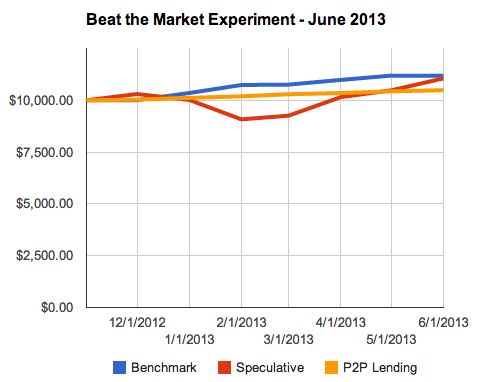
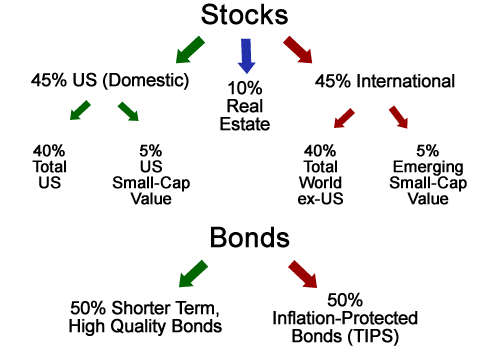
 Businessweek’s cover story this week is about how
Businessweek’s cover story this week is about how  The Best Credit Card Bonus Offers – March 2024
The Best Credit Card Bonus Offers – March 2024 Big List of Free Stocks from Brokerage Apps
Big List of Free Stocks from Brokerage Apps Best Interest Rates on Cash - March 2024
Best Interest Rates on Cash - March 2024 Free Credit Scores x 3 + Free Credit Monitoring
Free Credit Scores x 3 + Free Credit Monitoring Best No Fee 0% APR Balance Transfer Offers
Best No Fee 0% APR Balance Transfer Offers Little-Known Cellular Data Plans That Can Save Big Money
Little-Known Cellular Data Plans That Can Save Big Money How To Haggle Your Cable or Direct TV Bill
How To Haggle Your Cable or Direct TV Bill Big List of Free Consumer Data Reports (Credit, Rent, Work)
Big List of Free Consumer Data Reports (Credit, Rent, Work)